What Are the Flowering Times for Marigolds? A Gardener’s Guide
Marigolds are a wonderful addition to any garden with their bright blooms and hardy nature. If you love flowers that require little maintenance, marigolds are a perfect choice. They usually start blooming in spring and continue all through the fall. This makes them a favorite among gardeners who enjoy a long-lasting splash of color.
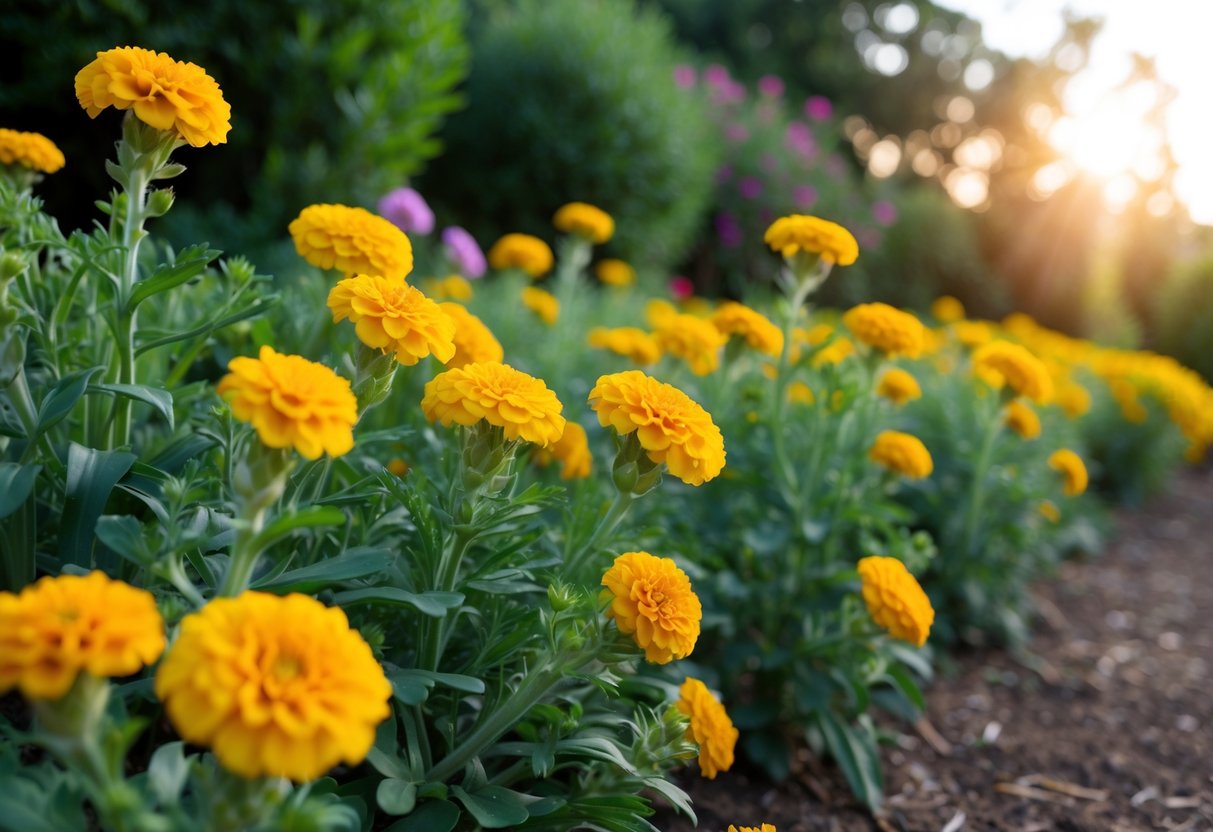
You don’t need to be an expert to grow marigolds successfully. They’re known for being easy to cultivate, thriving in various conditions with minimal attention. Whether you’re a seasoned gardener or a beginner, these flowers will bring joy and vibrancy to your outdoor space.
Their vivid colors not only beautify your garden but can also benefit vegetable gardens by deterring pests. With these charming flowers, you can enjoy a lively garden paradise for months. Curious about how to get started? Dive into the full guide to cultivate your own beautiful marigold display.
Understanding Marigolds
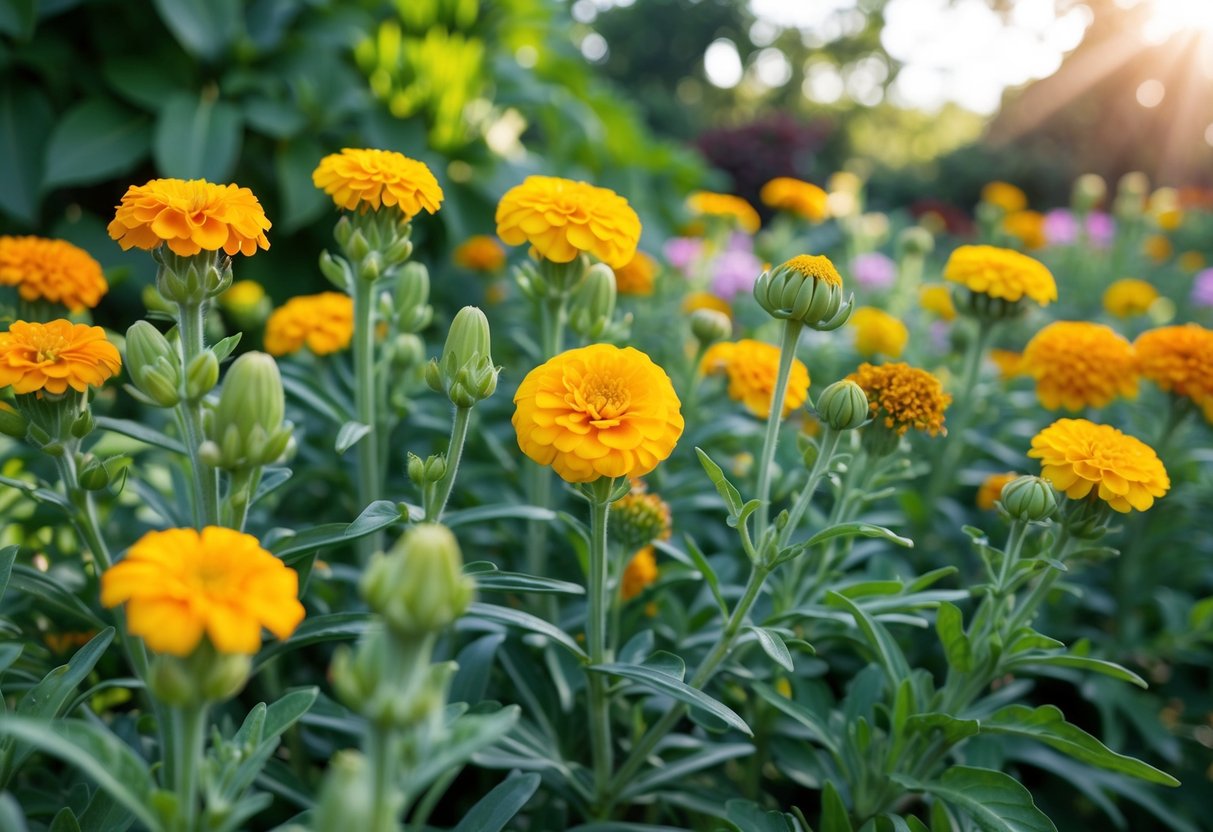
Marigolds are vibrant and low-maintenance flowers found in many gardens. They have various species, each with unique characteristics and needs. Learning about species and growing conditions helps you cultivate them successfully.
Species Overview
Marigolds belong to the Tagetes genus and are part of the aster family. Popular species include African Marigolds (Tagetes erecta), known for their large blooms and height, often reaching up to three feet. French Marigolds (Tagetes patula) are more compact with bushy growth and smaller flowers. Signet Marigolds (Tagetes tenuifolia) have delicate blooms and fern-like leaves, providing a unique charm to gardens. Understanding these differences helps in choosing the ideal marigold for your landscape.
Optimal Growing Conditions
Marigolds thrive in full sun, requiring 6 to 8 hours of sunlight daily. They prefer neutral soil with a pH of 6.0 to 7.0. You can plant them in garden beds or containers. Ensure planting spaces depend on the species: African Marigolds need at least 10 to 12 inches apart, while French and Signet Marigolds require 8 to 10 inches. Opt for soil that drains well but isn’t overly rich in nutrients. Providing these conditions ensures healthy growth and vibrant blooms.
Planting and Propagation
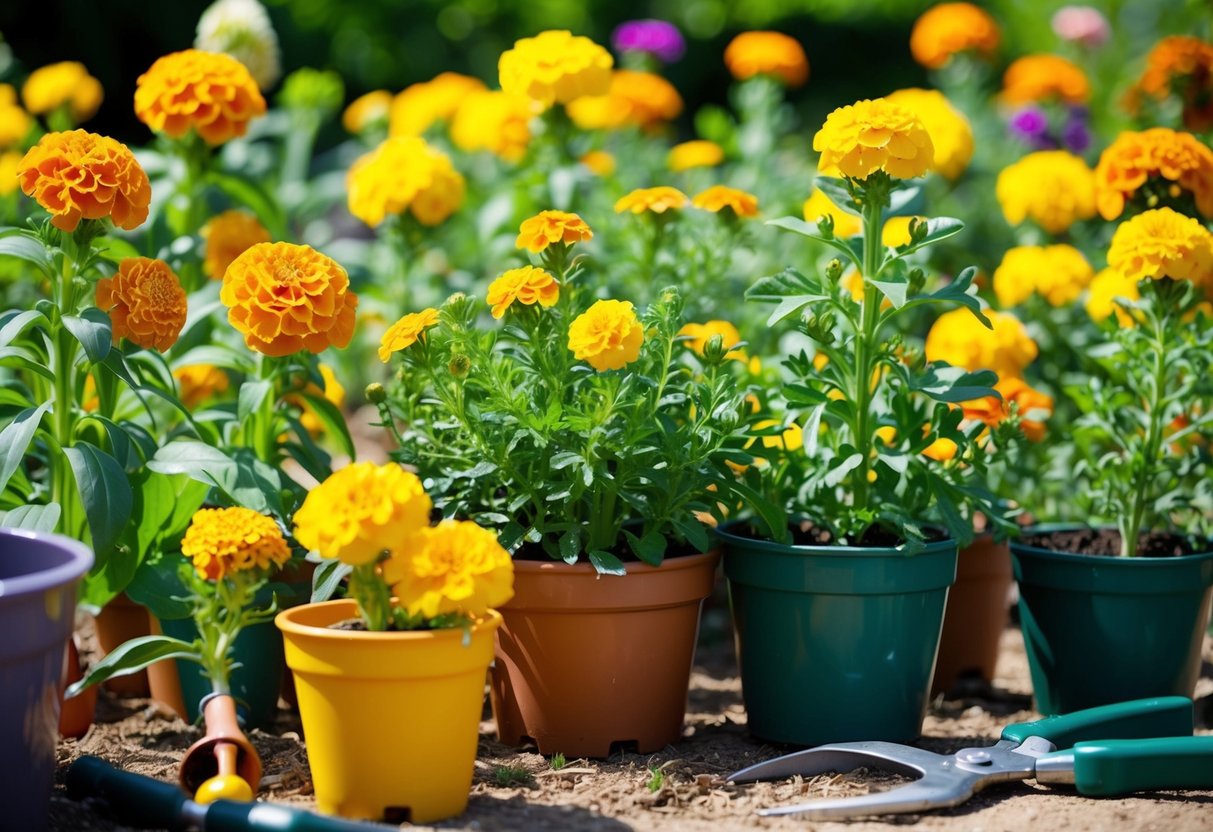
When planting marigolds, there are a few key points to keep in mind. You can grow these vibrant flowers either by starting from seeds or by transplanting young plants. Each method offers its own steps and considerations to ensure successful growth and blooms.
Starting from Seeds
To propagate marigolds, you can begin by sowing marigold seeds directly into the soil after the threat of frost has passed. Before planting, make sure the soil is well-drained and roughly neutral with a pH between 6.0 and 7.0. Sow the seeds about half an inch deep and lightly cover them with soil. Water the area gently to settle the soil.
For quicker germination, consider starting your seeds indoors about 4-6 weeks before the last frost date. This method gives the seeds a head start, and you can transplant the seedlings once the climate is suitable. Maintain the soil moisture consistently until the seeds sprout. Expect germination to occur in 7-14 days with proper care and warmth.
Transplanting Tips
If you prefer buying young plants, transplanting is a simple option. Space French and signet marigolds about 8 to 10 inches apart. For larger varieties like African marigolds, space them at least 10 to 12 inches apart. This ensures each plant has enough room to grow.
Water each plant thoroughly at the planting time to help the roots establish. If you’re planting marigolds in containers, use a soil-based potting mix. Ensure your pots have drainage holes to prevent waterlogging. Position the containers or ground plants in a sunny area since marigolds thrive in full sun for optimal bloom.
Marigold Care and Maintenance

Marigolds are cherished for their bright blooms and ease of care. To keep them flourishing, focus on proper watering, fertilization, and regular pruning.
Watering and Fertilization
Watering marigolds is quite simple. You should water them only when the top inch of soil feels dry. This helps prevent overwatering, which can lead to root rot. During hot weather, marigolds might need water more often. Early in the morning is the best time to water them, allowing the moisture to reach roots before the midday sun.
Fertilization keeps your marigolds healthy and vibrant. Use a balanced, slow-release fertilizer about every month during the growing season. Avoid over-fertilizing as this can cause lush foliage at the expense of blooms. A well-drained, loamy soil promotes optimal growth and flowering.
Pruning and Deadheading
Pruning is essential for maintaining the shape and size of marigold plants. Trim back any excessive growth or damaged leaves to keep them looking tidier and to improve air circulation around them.
Deadheading marigolds regularly encourages continuous blooming. Simply pinch off wilted flowers between your thumb and forefinger. This simple process prevents seed development, which promotes the growth of new flowers. Caring for marigolds by pruning and deadheading not only prolongs flowering but also reduces the risk of disease, ensuring a bright and healthy marigold garden.
Marigold Flowering Stages
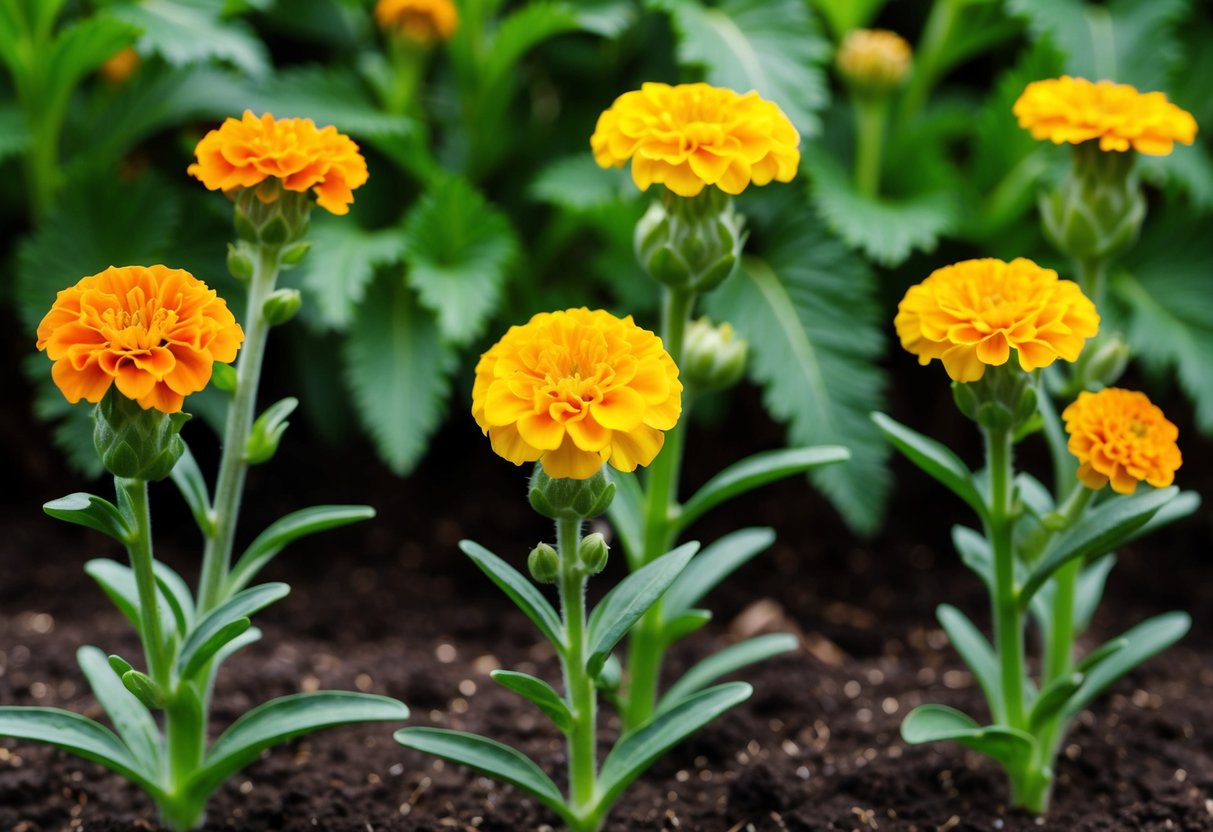
Marigolds bring vibrant colors to your garden, blooming typically in striking shades like orange, yellow, and red. Understanding when they bloom and how to care for them after ensures your flowers stay beautiful throughout their blooming period.
Bloom Time and Duration
Marigolds usually begin to bloom in late spring and continue until the first frost in fall. These vibrant flowers thrive in warm weather, needing at least 6 to 8 hours of sunlight daily to flourish. With this proper care, marigolds can bloom almost non-stop, offering bright colors all season long.
It generally takes 30 to 50 days after sowing for the flowers to bloom. The actual flowering period can last for a couple of months. Keeping marigolds in temperatures between 65 to 75 degrees Fahrenheit during the day helps maintain their blooms. As your marigolds go through their flowering stage, they provide a lively splash of orange and yellow that can instantly uplift any garden.
Post-Bloom Care
Once your marigolds start to wilt, some simple steps can help prolong their blooming period. Deadheading, or removing spent flowers, encourages marigolds to produce more blooms and keeps the plants looking tidy. It’s essential to keep your marigolds well-watered but not overly wet, maintaining moisture without creating sogginess.
These flowers are generally pest-free, but keeping an eye out for any issues is always wise. Fertilizing with a balanced, slow-release fertilizer can help maintain healthy foliage and potentially spark another round of blooming. With proper care, marigolds can stay colorful and vibrant through much of the growing season, ensuring your garden remains lively and inviting.
Protecting Marigolds from Pests and Diseases
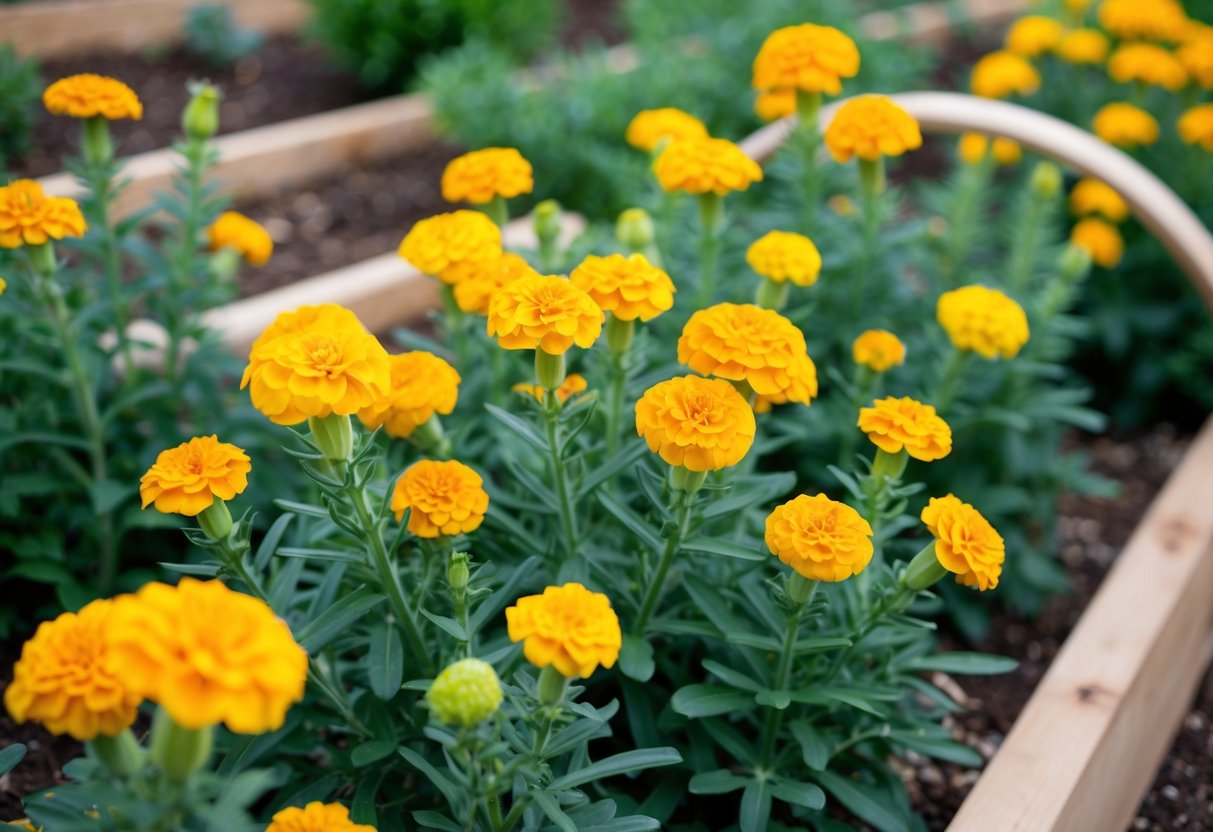
Marigolds are tough plants but can face challenges from pests and diseases. Common problems include insect infestations and fungal infections, which can damage the plant’s health and growth.
Common Threats
Your marigolds might be troubled by various pests and diseases. Aphids and spider mites are tiny insects that can attack your plants, often showing up as small green bugs on stems or the undersides of leaves. Another pest, nematodes, can harm marigold roots, causing issues underground.
In addition to pests, keep an eye out for diseases like powdery mildew and root rot. Powdery mildew shows up as white patches, while root rot is often linked to overwatering or poor drainage. Fungal diseases can also cause dark spots or wilting, impacting overall plant health.
Pest Prevention and Treatment
To protect marigolds from insects, try using insecticidal soap or neem oil to target aphids and spider mites. Handpicking or using barriers can help against larger pests like slugs and snails.
Ensure plants are healthy by watering them properly. Marigolds are generally drought-tolerant and can suffer from overwatering.
For disease prevention, you should space plants adequately for proper air circulation. This helps reduce the risk of fungal diseases like powdery mildew.
If your plants show signs of root rot, improve soil drainage to protect the roots. Regular checks and appropriate treatments can keep your marigolds thriving and healthy.







